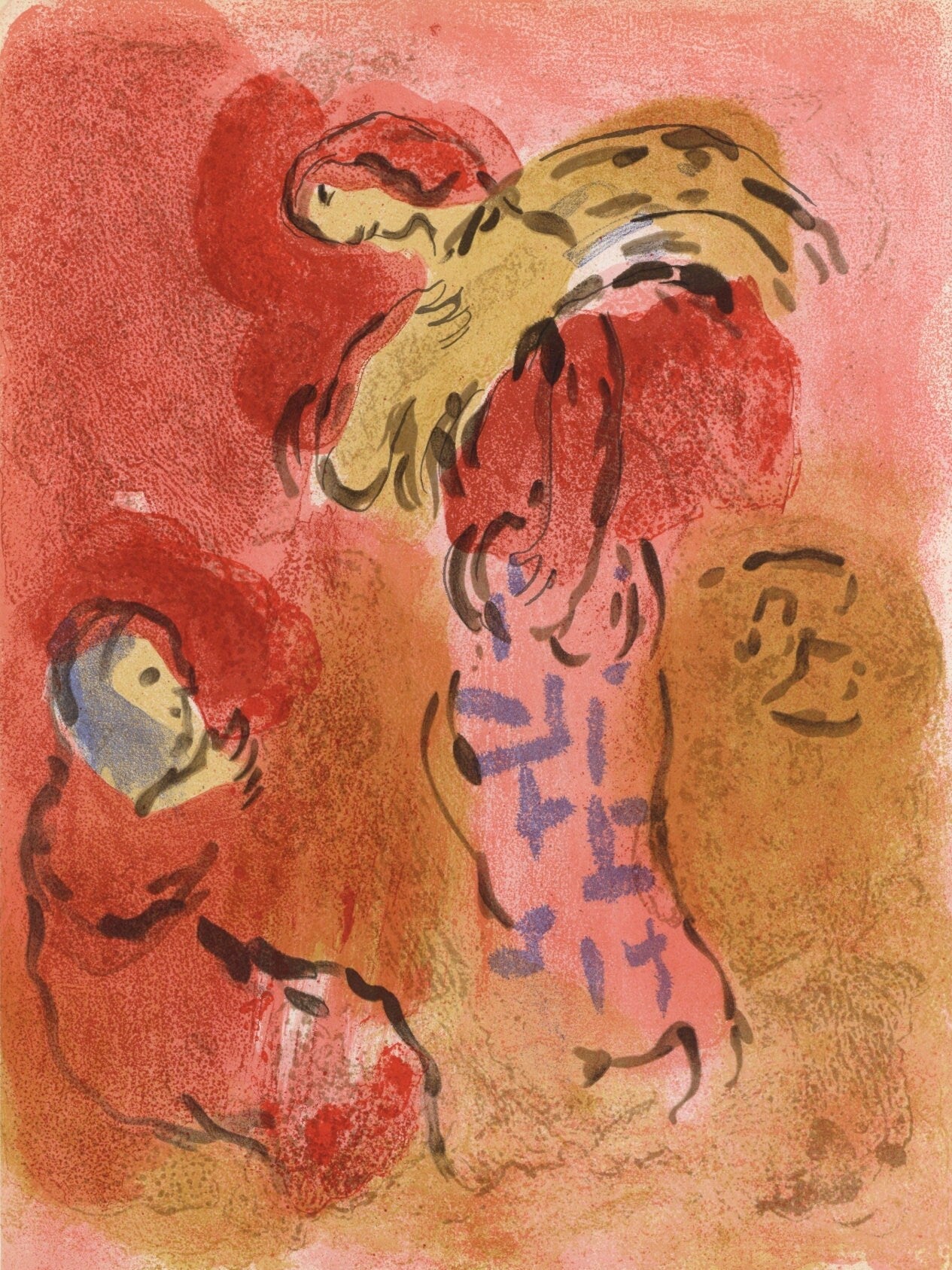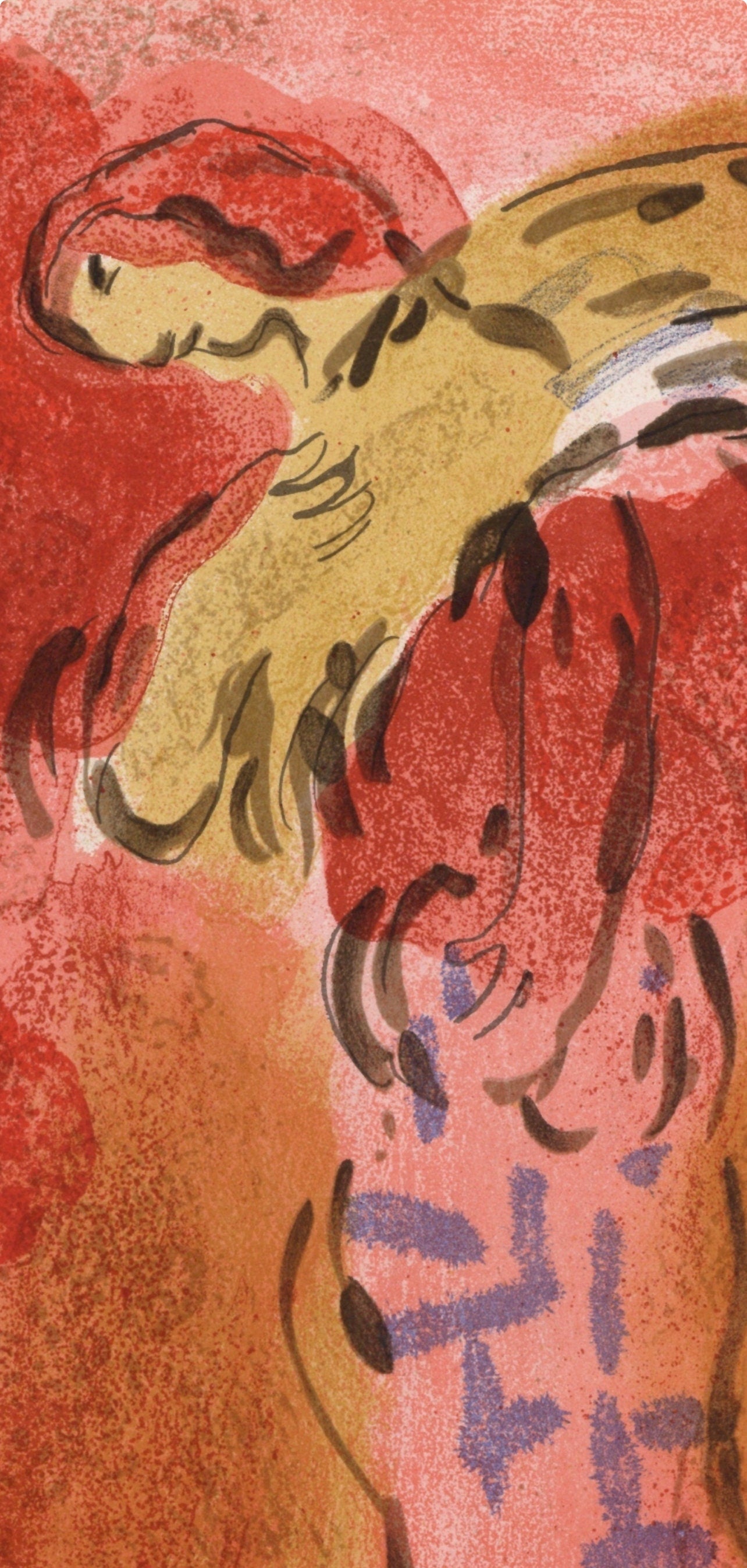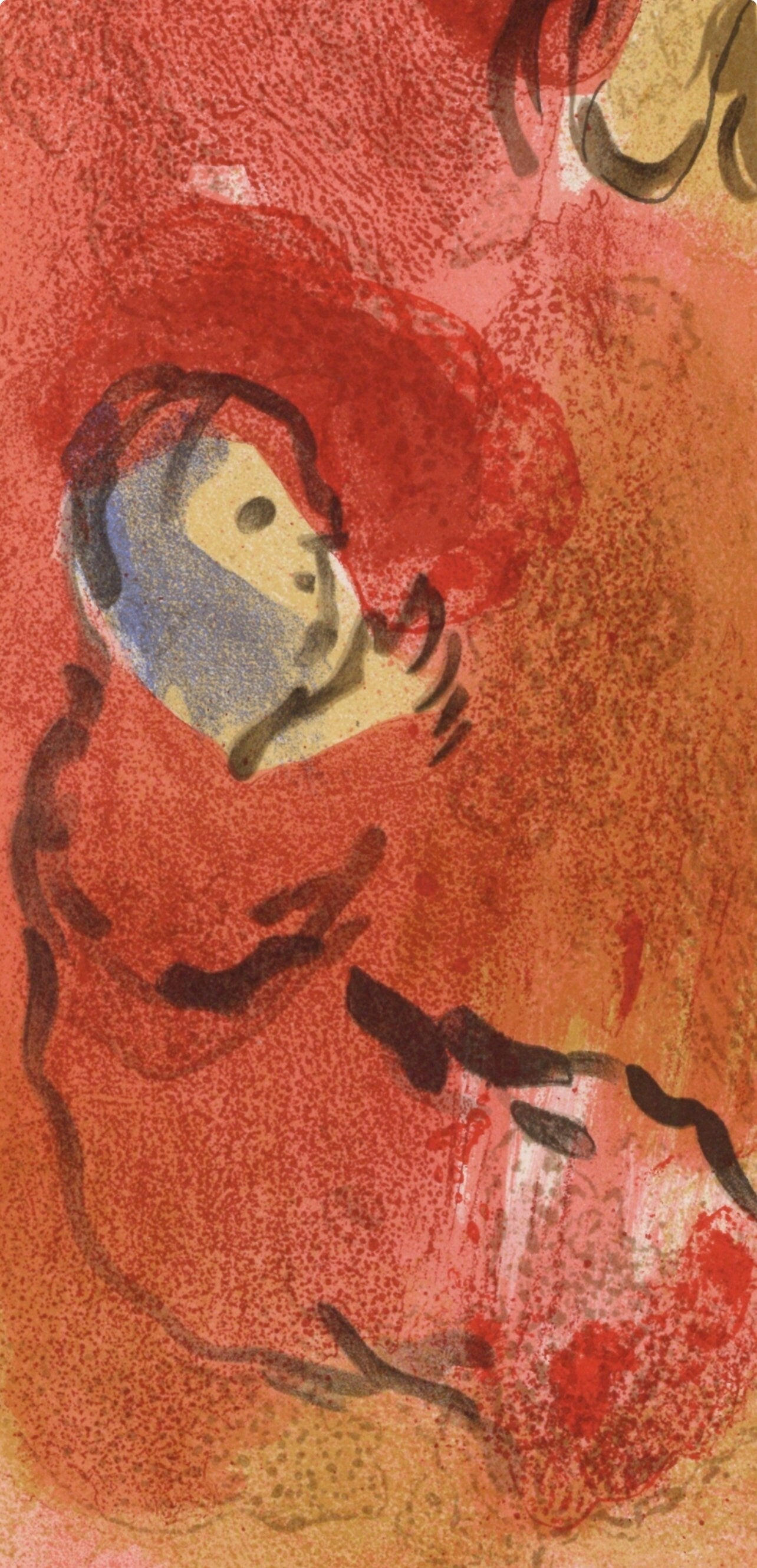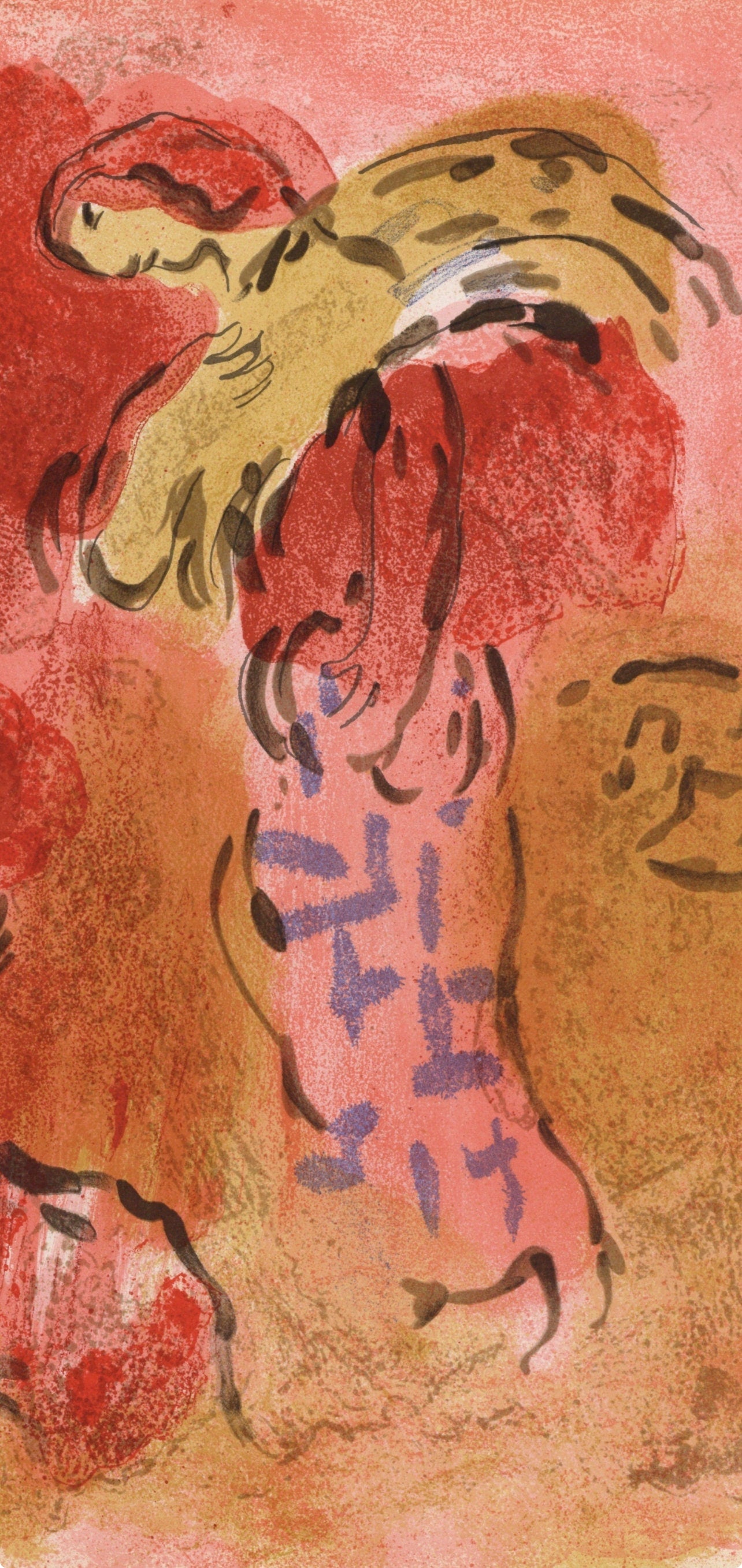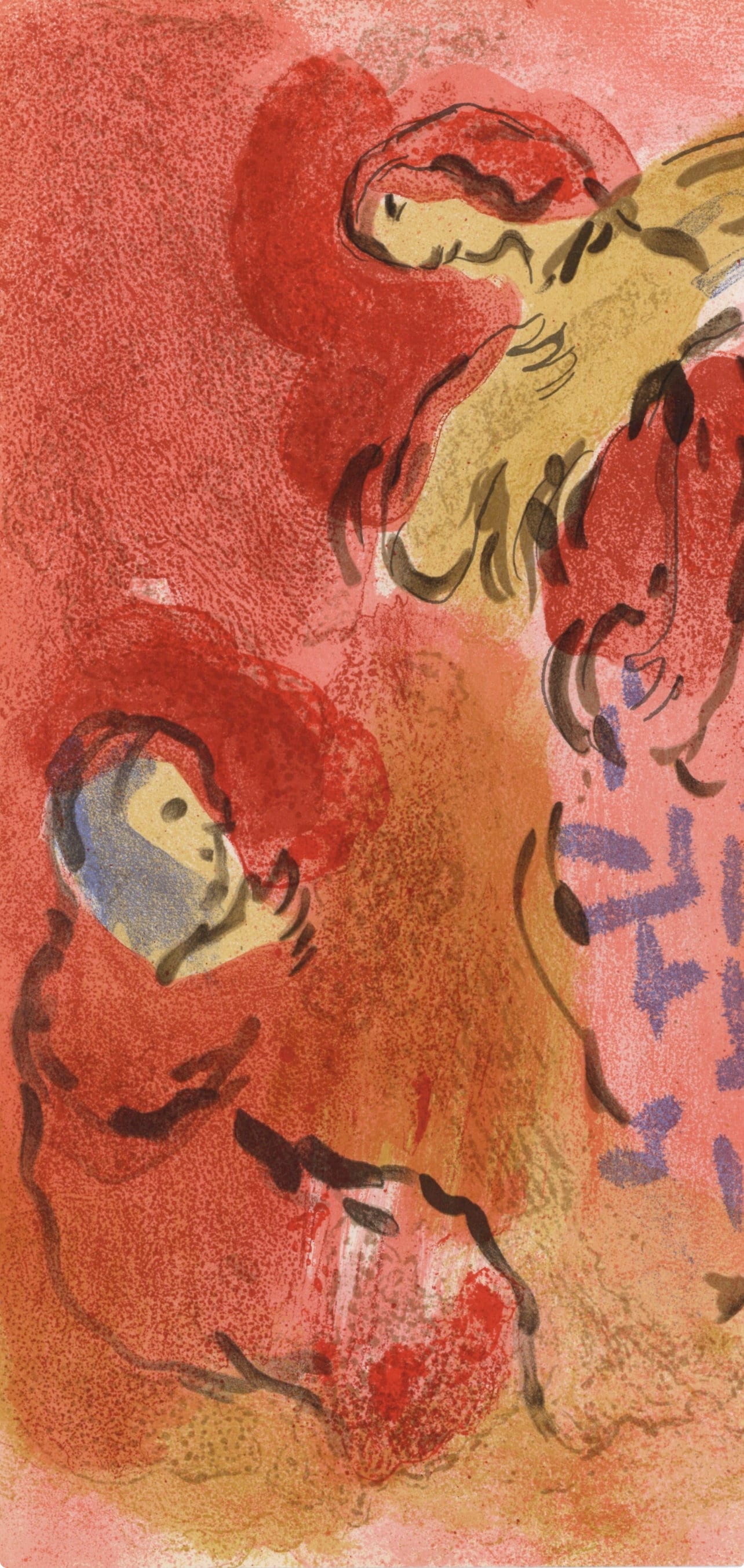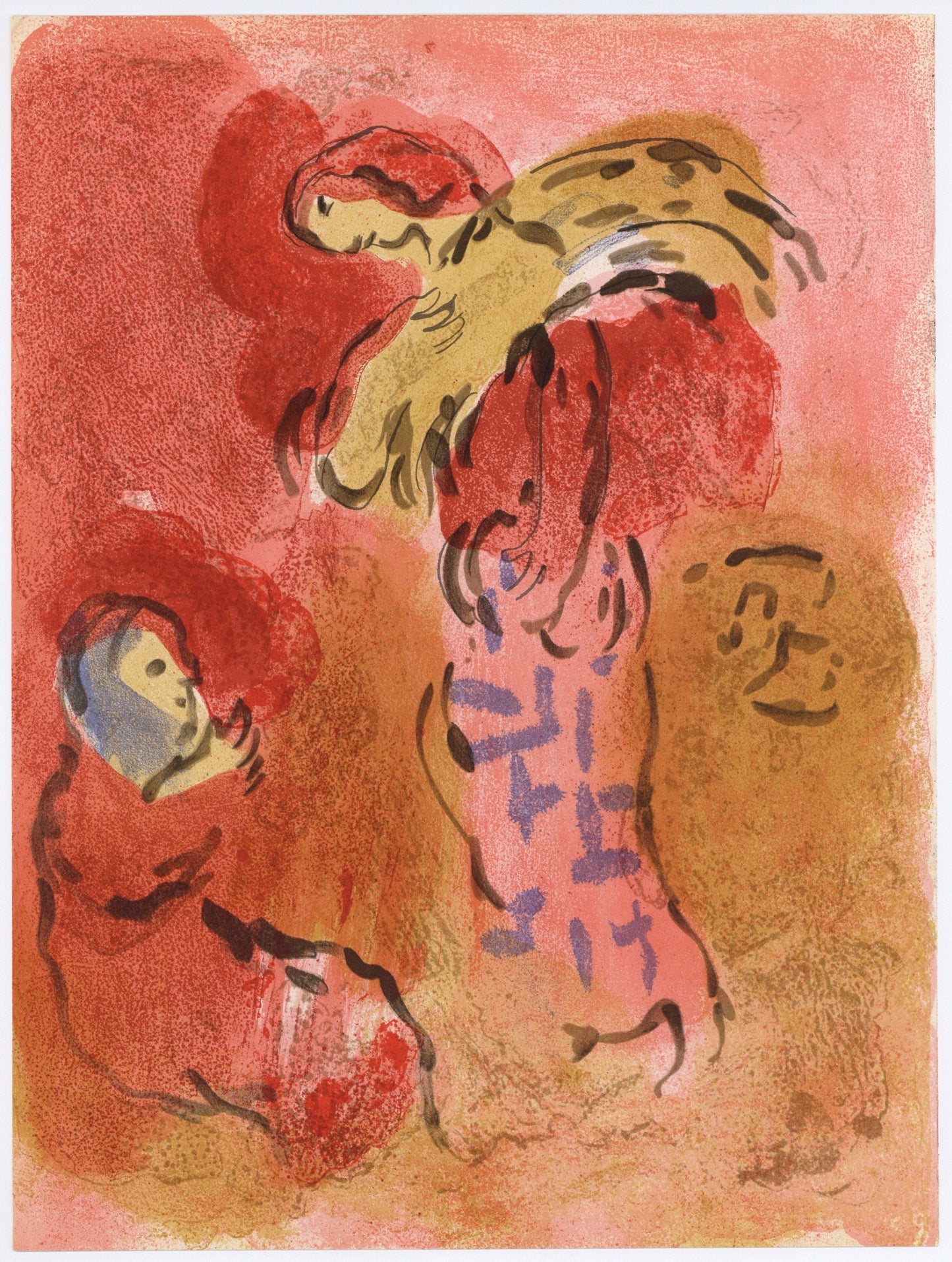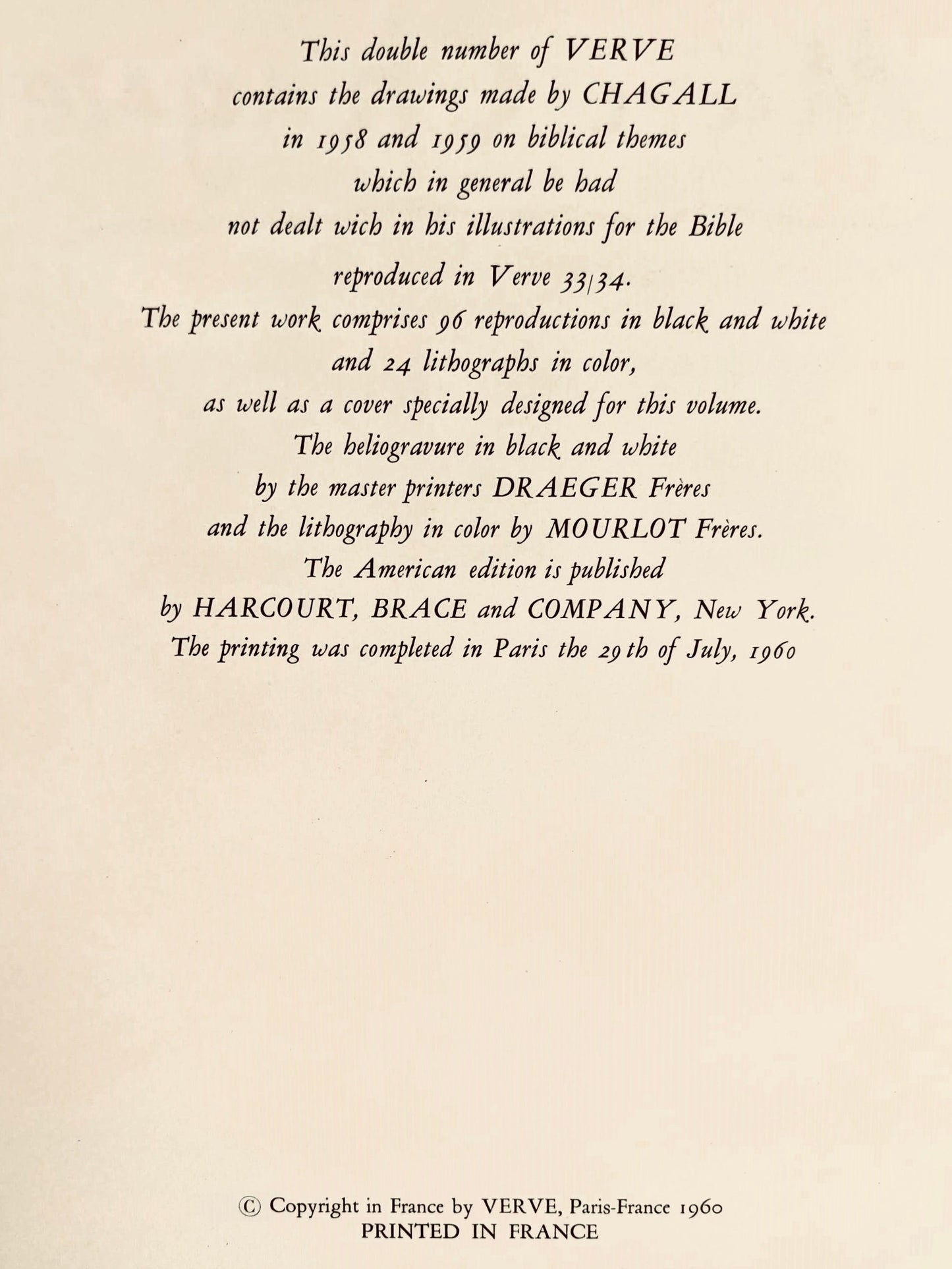1
/
of
9
Auction Ended: August 14, 2025
Post-Auction Sale Ends in:
Marc Chagall, Ruth Gleaning (Mourlot 117-46; Cramer 25), Drawings From The Bible By Marc Chagall,
Marc Chagall, Ruth Gleaning (Mourlot 117-46; Cramer 25), Drawings From The Bible By Marc Chagall,
Regular price
$950.40 USD
Regular price
$0.00 USD
Sale price
$950.40 USD
Unit price
/
per
Couldn't load pickup availability
Condition: Pre-Owned
Lithograph on vlin des Papeteries du Marais paper. Unsigned and unnumbered. Paper Size: 14 x 10.5 inches. Excellent condition. Notes: From the volume, Drawings from the Bible by Marc Chagall, Verve: Revue Artistique et Littraire, Vol. VIII, N 33-34, 1960. Published by ditions de la revue Verve, Paris in collaboration with Harcourt Brace and Company, New York; printed by Mourlot Frres, Paris, July 20, 1960. Excerpted from the volume, This double number of Verve contains......
Lithograph on vlin des Papeteries du Marais paper. Unsigned and unnumbered. Paper Size: 14 x 10.5 inches. Excellent condition. Notes: From the volume, Drawings from the Bible by Marc Chagall, Verve: Revue Artistique et Littraire, Vol. VIII, N 33-34, 1960. Published by ditions de la revue Verve, Paris in collaboration with Harcourt Brace and Company, New York; printed by Mourlot Frres, Paris, July 20, 1960. Excerpted from the volume, This double number of Verve contains......
Condition: Pre-Owned
Lithograph on vlin des Papeteries du Marais paper. Unsigned and unnumbered. Paper Size: 14 x 10.5 inches. Excellent condition. Notes: From the volume, Drawings from the Bible by Marc Chagall, Verve: Revue Artistique et Littraire, Vol. VIII, N 33-34, 1960. Published by ditions de la revue Verve, Paris in collaboration with Harcourt Brace and Company, New York; printed by Mourlot Frres, Paris, July 20, 1960. Excerpted from the volume, This double number of Verve contains the drawings made by Chagall in 1958 and 1959 on biblical themes which in general be had not dealt with in bis illustrations for the Bible reproduced in Verve 33/34. The present work comprises go reproductions in black and white and 24 lithographs in color, as well as a cover specially designed for this volume. The heliogravure in black and white by the master printers Draeger Frres and the lithography in color by Mourlot Frres. The American edition is published by Harcourt, Brace and Company, New York. The printing was completed in Paris the 29th of July, 1960. Chagall, famous for the lyric quality of his art, has been in the forefront of contemporary painters for many years. Now he has produced the only truly great illustrations for the Bible since Rembrandt and Blake. Originally commissioned by the eminent art dealer Ambroise Vollard, Chagall began his epic work in 1930. The artist left Paris in 1931 to travel in Palestine, Syria, and Egypt. Upon his return he began the work on the copperplate engravings that is only now completed. A magnificent effort of more than thirty years' duration, it is one of the outstanding endeavors of our time. For his choice of themes, Chagall has concentrated on the great Old Testament figures: the patriarchs Noah, Isaac, Moses, Jacob, and Joseph; Joshua, who led the Jews into Canaan; Samson, David, and Solomon; the prophets Elijah, Isaiah, Jeremiah, and Ezekiel then follow. His choices, emphasizing as they do their singularly personal elements, fall into three significant categories: the great ancestors who founded the Jewish community; the achievement of nationhood with Joshua, Samson, David, and Solomon; and the prophets with their vision of God and the prophecies of the misfortunes and consolations of Israel. Yet in Chagall's Bible numerous scenes are included of the erotic, the joyous, the familial, the miraculous, and the fantastic. In his brilliant Introduction, the distinguished art historian and critic Meyer Schapiro writes: "Although these etchings are marvels of patient, scrupulous craftsmanship, there is not assertion here of skill or technical research, but an immersion in a subject which the artist convinces us often equals or transcends in value the work of art.... In almost every image we experience the precise note of his emotion, his awe or sadness or joy, which is voiced in the melody of shapes and the tonal scale peculiar to each conception. "If we had nothing of Chagall but his Bible, he would be for us a great modern artist." As in the recent companion volumes - Picasso and the Human Comedy and The Intimate Sketchbooks of Georges Braque - this book displays reproductions magnificent by any criterion. Produced in Paris under the direction of Triade of Verve by the master printer Draeger trres, it contains / gravure plates.
MARC CHAGALL (1897-1985) was a Russian-French artist. An early modernist, he was associated with the cole de Paris as well as several major artistic styles and created works in a wide range of artistic formats, including painting, drawings, book illustrations, stained glass, stage sets, ceramics, tapestries and fine art prints. Chagall was born into a Jewish family near Vitebsk, today in Belarus, but at that time in the Pale of Settlement of the Russian Empire. Before World War I, he travelled between Saint Petersburg, Paris, and Berlin. During that period, he created his own mixture and style of modern art, based on his ideas of Eastern European and Jewish folklore. He spent the wartime years in his native Belarus, becoming one of the country's most distinguished artists and a member of the modernist avant-garde, founding the Vitebsk Arts College. He later worked in and near Moscow in difficult conditions during hard times in Russia following the Bolshevik Revolution, before leaving again for Paris in 1923. During World War II, he escaped occupied France to the United States, where he lived in New York City for seven years before returning to France in 1948. Art critic Robert Hughes referred to Chagall as "the quintessential Jewish artist of the twentieth century". According to art historian Michael J. Lewis, Chagall was considered to be "the last survivor of the first generation of European modernists". For decades, he "had also been respected as the world's pre-eminent Jewish artist". Using the medium of stained glass, he produced windows for the cathedrals of Reims and Metz as well as the Fraumnster in Zrich, windows for the UN and the Art Institute of Chicago and the Jerusalem Windows in Israel. He also did large-scale paintings, including part of the ceiling of the Paris Opra. He experienced modernism's "golden age" in Paris, where "he synthesized the art forms of Cubism, Symbolism, and Fauvism, and the influence of Fauvism gave rise to Surrealism". Yet throughout these phases of his style "he remained most emphatically a Jewish artist, whose work was one long dreamy reverie of life in his native village of Vitebsk." "When Matisse dies", Pablo Picasso remarked in the 1950s, "Chagall will be the only painter left who understands what colour really is.
Product Disclaimer: Please review the full description and photos. Lithographs may be plate-signed, hand-signed, or slab-signed and can include a COA (see images); edition numbers shown may vary from the one shipped. Pricing reflects signature type—hand-signed pieces carry a premium and are clearly labeled. 'After' or 'nach' indicates an authorised lithographic reproduction in the style of the named artist, not a unique original. For inquiries, please reach out to support@seuyco.com. By registering for or placing a bid in any SEUYCO auction, you confirm that you have read, understood, and agree to our Shipping, Payment, and Auction Policies.
Lithograph on vlin des Papeteries du Marais paper. Unsigned and unnumbered. Paper Size: 14 x 10.5 inches. Excellent condition. Notes: From the volume, Drawings from the Bible by Marc Chagall, Verve: Revue Artistique et Littraire, Vol. VIII, N 33-34, 1960. Published by ditions de la revue Verve, Paris in collaboration with Harcourt Brace and Company, New York; printed by Mourlot Frres, Paris, July 20, 1960. Excerpted from the volume, This double number of Verve contains the drawings made by Chagall in 1958 and 1959 on biblical themes which in general be had not dealt with in bis illustrations for the Bible reproduced in Verve 33/34. The present work comprises go reproductions in black and white and 24 lithographs in color, as well as a cover specially designed for this volume. The heliogravure in black and white by the master printers Draeger Frres and the lithography in color by Mourlot Frres. The American edition is published by Harcourt, Brace and Company, New York. The printing was completed in Paris the 29th of July, 1960. Chagall, famous for the lyric quality of his art, has been in the forefront of contemporary painters for many years. Now he has produced the only truly great illustrations for the Bible since Rembrandt and Blake. Originally commissioned by the eminent art dealer Ambroise Vollard, Chagall began his epic work in 1930. The artist left Paris in 1931 to travel in Palestine, Syria, and Egypt. Upon his return he began the work on the copperplate engravings that is only now completed. A magnificent effort of more than thirty years' duration, it is one of the outstanding endeavors of our time. For his choice of themes, Chagall has concentrated on the great Old Testament figures: the patriarchs Noah, Isaac, Moses, Jacob, and Joseph; Joshua, who led the Jews into Canaan; Samson, David, and Solomon; the prophets Elijah, Isaiah, Jeremiah, and Ezekiel then follow. His choices, emphasizing as they do their singularly personal elements, fall into three significant categories: the great ancestors who founded the Jewish community; the achievement of nationhood with Joshua, Samson, David, and Solomon; and the prophets with their vision of God and the prophecies of the misfortunes and consolations of Israel. Yet in Chagall's Bible numerous scenes are included of the erotic, the joyous, the familial, the miraculous, and the fantastic. In his brilliant Introduction, the distinguished art historian and critic Meyer Schapiro writes: "Although these etchings are marvels of patient, scrupulous craftsmanship, there is not assertion here of skill or technical research, but an immersion in a subject which the artist convinces us often equals or transcends in value the work of art.... In almost every image we experience the precise note of his emotion, his awe or sadness or joy, which is voiced in the melody of shapes and the tonal scale peculiar to each conception. "If we had nothing of Chagall but his Bible, he would be for us a great modern artist." As in the recent companion volumes - Picasso and the Human Comedy and The Intimate Sketchbooks of Georges Braque - this book displays reproductions magnificent by any criterion. Produced in Paris under the direction of Triade of Verve by the master printer Draeger trres, it contains / gravure plates.
MARC CHAGALL (1897-1985) was a Russian-French artist. An early modernist, he was associated with the cole de Paris as well as several major artistic styles and created works in a wide range of artistic formats, including painting, drawings, book illustrations, stained glass, stage sets, ceramics, tapestries and fine art prints. Chagall was born into a Jewish family near Vitebsk, today in Belarus, but at that time in the Pale of Settlement of the Russian Empire. Before World War I, he travelled between Saint Petersburg, Paris, and Berlin. During that period, he created his own mixture and style of modern art, based on his ideas of Eastern European and Jewish folklore. He spent the wartime years in his native Belarus, becoming one of the country's most distinguished artists and a member of the modernist avant-garde, founding the Vitebsk Arts College. He later worked in and near Moscow in difficult conditions during hard times in Russia following the Bolshevik Revolution, before leaving again for Paris in 1923. During World War II, he escaped occupied France to the United States, where he lived in New York City for seven years before returning to France in 1948. Art critic Robert Hughes referred to Chagall as "the quintessential Jewish artist of the twentieth century". According to art historian Michael J. Lewis, Chagall was considered to be "the last survivor of the first generation of European modernists". For decades, he "had also been respected as the world's pre-eminent Jewish artist". Using the medium of stained glass, he produced windows for the cathedrals of Reims and Metz as well as the Fraumnster in Zrich, windows for the UN and the Art Institute of Chicago and the Jerusalem Windows in Israel. He also did large-scale paintings, including part of the ceiling of the Paris Opra. He experienced modernism's "golden age" in Paris, where "he synthesized the art forms of Cubism, Symbolism, and Fauvism, and the influence of Fauvism gave rise to Surrealism". Yet throughout these phases of his style "he remained most emphatically a Jewish artist, whose work was one long dreamy reverie of life in his native village of Vitebsk." "When Matisse dies", Pablo Picasso remarked in the 1950s, "Chagall will be the only painter left who understands what colour really is.
Product Disclaimer: Please review the full description and photos. Lithographs may be plate-signed, hand-signed, or slab-signed and can include a COA (see images); edition numbers shown may vary from the one shipped. Pricing reflects signature type—hand-signed pieces carry a premium and are clearly labeled. 'After' or 'nach' indicates an authorised lithographic reproduction in the style of the named artist, not a unique original. For inquiries, please reach out to support@seuyco.com. By registering for or placing a bid in any SEUYCO auction, you confirm that you have read, understood, and agree to our Shipping, Payment, and Auction Policies.
+ Read More
